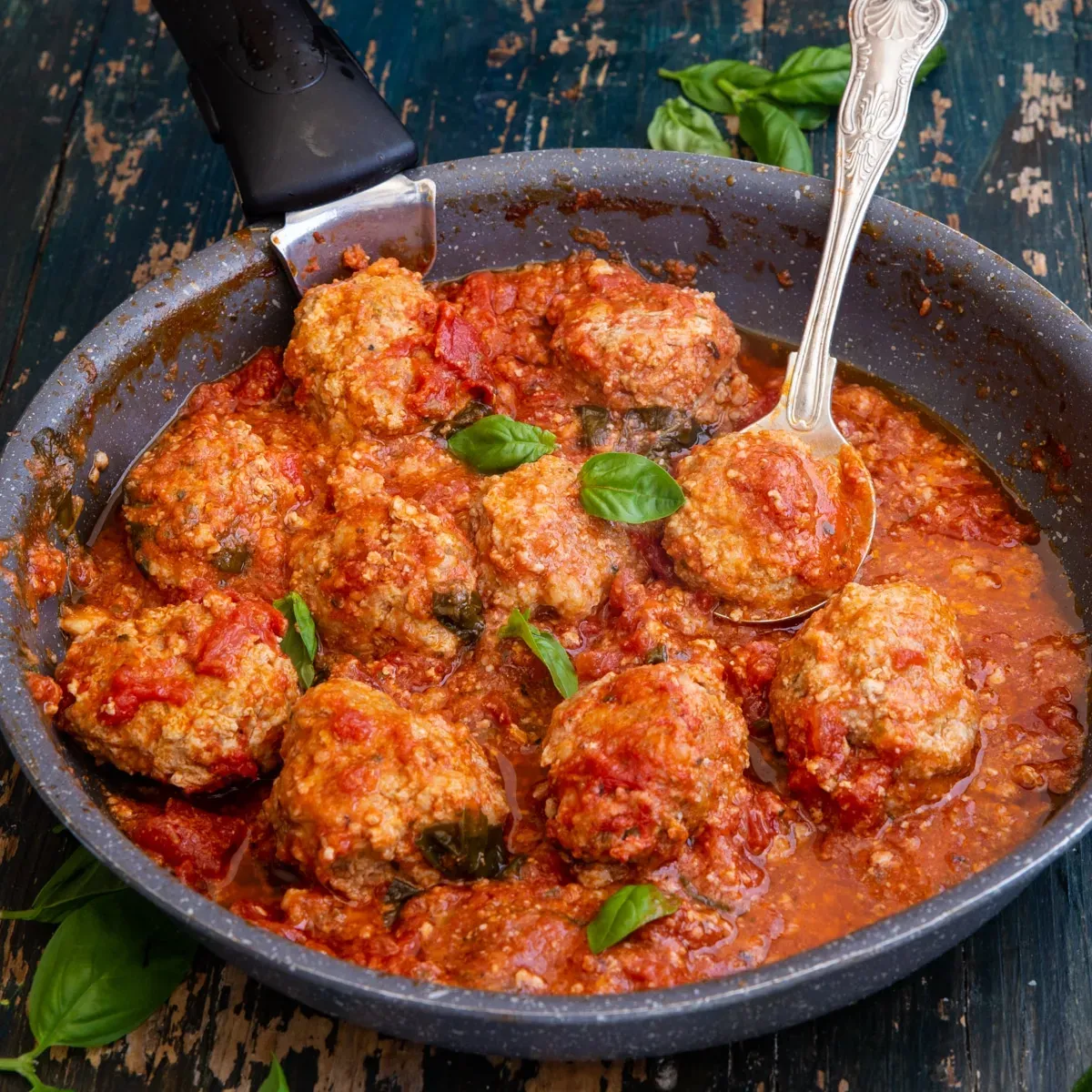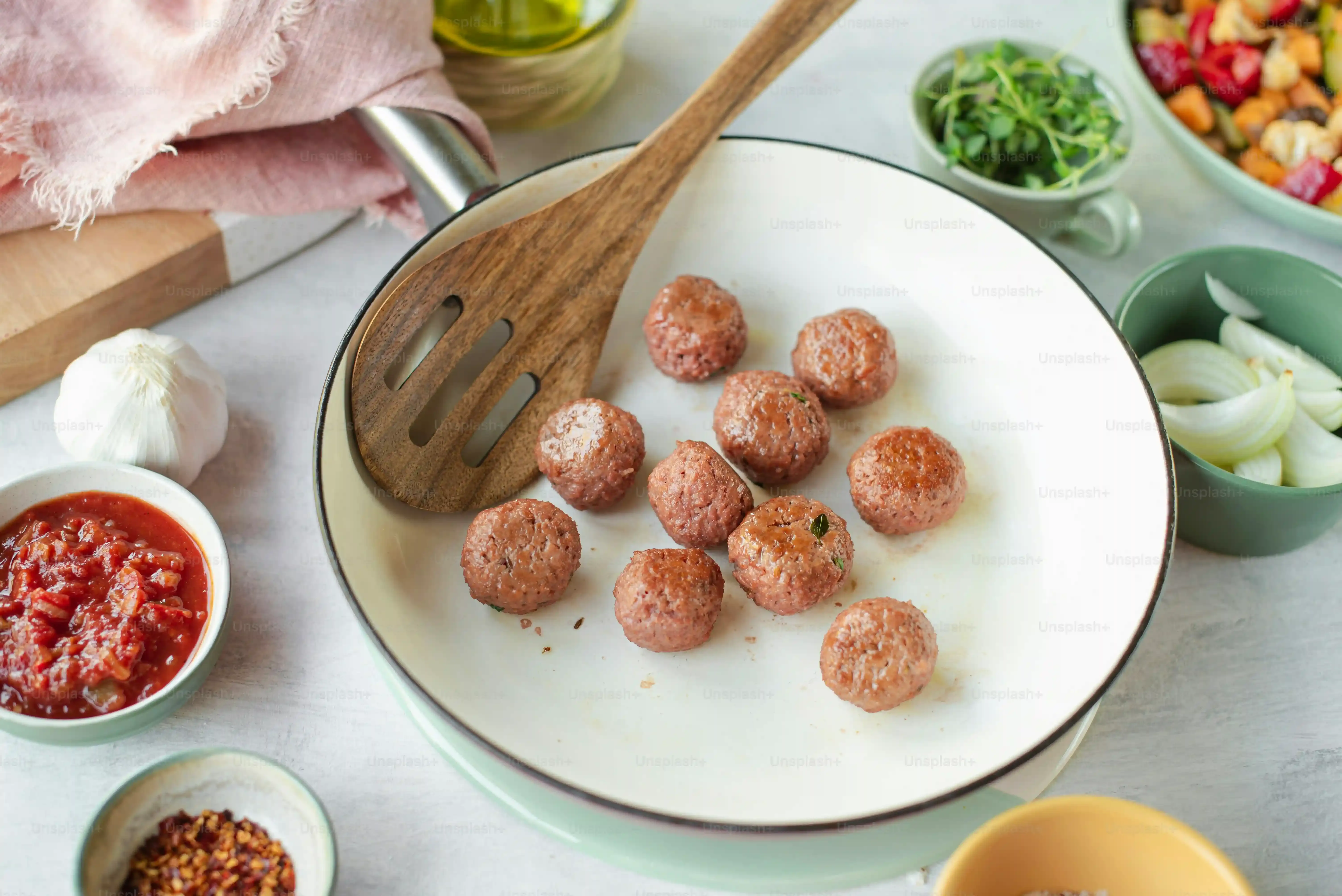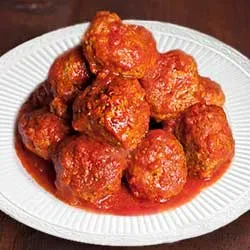Table of Contents
Let's be honest, most meatballs out there are... fine. They're round, they have meat, they sit in sauce. But are they *the* meatball? The one that makes you close your eyes and remember Sunday dinner at someone's nonna's house, even if you've never been? Probably not. Finding an italian meatball recipe authentic can feel like chasing a culinary ghost – everyone has a claim, but few deliver that truly tender, flavorful bite.
What Exactly Are "Authentic" Italian Meatballs?

What Exactly Are "Authentic" Italian Meatballs?
Defining "Authentic" in the Meatball World
Alright, let's get one thing straight right away: asking for *the* italian meatball recipe authentic is like asking for *the* way to breathe. It doesn't really exist in a single, universally agreed-upon form across all of Italy. Every family, every region, sometimes even every nonna in the same village, has their own take. What one person swears is the only way to make a truly authentic meatball, another might look at sideways and say, "Eh, my nonna used way more garlic." So, when we talk about an italian meatball recipe authentic, we're often talking about a style, a feeling, a set of common characteristics that evoke that classic, comforting taste and texture.
Think less about a rigid rulebook and more about a general philosophy. It's about using quality ingredients, handling the meat gently, and creating something tender and full of flavor that pairs beautifully with a simple tomato sauce. It's not about being overly complicated or fancy. It's about simple ingredients singing together.
Common Traits of the "Real Deal"
So, while there's no single decree from Rome on meatball authenticity, there are definitely common threads you'll find in recipes passed down through generations, particularly those that have become popular in Italian-American cooking. These often involve a mix of meats – typically beef and pork, sometimes veal – for depth of flavor and texture. A crucial element is the binder, and we're not talking about just tossing in dry breadcrumbs. The secret weapon is often a panade, a mixture of soaked bread (usually stale or fresh, not dried crumbs) and milk, which keeps the meatballs incredibly moist and tender.
Eggs, grated cheese (like Pecorino Romano or Parmigiano-Reggiano), fresh parsley, garlic, salt, and pepper are standard players. Onion is sometimes included, sometimes not. The mixing method is key too; overworking the meat results in tough meatballs, and nobody wants that. The shape is usually rustic, hand-rolled, not perfectly uniform spheres. These elements combine to create a meatball that's soft inside, flavorful throughout, and holds its shape without being dense.
- Use a mix of meats (beef and pork are common).
- Include a panade (soaked bread and milk) for tenderness.
- Add grated hard cheese for flavor.
- Season with garlic, parsley, salt, and pepper.
- Mix gently to avoid toughness.
- Expect a rustic, hand-rolled shape.
Essential Ingredients for Your Italian Meatball Recipe

Essential Ingredients for Your Italian Meatball Recipe
The Foundation: Your Meat Blend
let's talk meat. You see recipes out there calling for just ground beef, and while you *can* do that, it's frankly a rookie move for an italian meatball recipe authentic. A blend is where the magic happens. Typically, you're looking at a mix of beef and pork. Beef brings that classic, robust flavor, while pork adds richness and keeps things moist thanks to its higher fat content. Some folks swear by adding veal for extra tenderness, and sure, it works, but it's not strictly necessary for a fantastic result. The key is a good ratio – a common starting point is a 50/50 mix of beef and pork, maybe leaning a little heavier on the beef if that's your preference. Just make sure you're getting ground meat with some fat in it (like 80/20 beef), not the super lean stuff, or you'll end up with dry, sad meatballs.
The Secret Weapon: The Panade
This is nonna's real secret, the one thing that separates the truly tender meatballs from the dense, rubbery ones. It's called a panade, and it's just a fancy word for stale or fresh bread soaked in milk. Forget those dry, dusty breadcrumbs from a canister; they just absorb moisture from the meat and make things tough. Using soaked bread introduces moisture *into* the mix right from the start. The starch in the bread expands as it absorbs the milk, creating a light, airy structure that keeps the meatballs incredibly tender as they cook. You want to use bread without a hard crust, like Italian bread or even good quality sandwich bread. Rip it up, soak it in milk until it's mushy, then squeeze out the excess liquid before adding it to your meat mixture. It feels weirdly squishy, but trust the process.
- Use a blend of beef and pork for best flavor and moisture.
- Avoid overly lean meat.
- Make a panade with soaked bread and milk – skip the dry crumbs!
- Squeeze excess liquid from the soaked bread.
Flavor Boosters: Cheese, Herbs, and Aromatics
Meat and bread are the base, but these additions bring the flavor. Grated hard cheese is non-negotiable. Pecorino Romano is traditional and brings a sharp, salty kick, but Parmigiano-Reggiano is also excellent and adds a nuttier depth. Use the good stuff and grate it fresh. Fresh parsley is a must for brightness; don't even think about using dried. Garlic provides that essential aromatic punch. Finely mince it or grate it. Salt and pepper are your basic seasonings, but don't be shy – meat needs adequate seasoning. Some recipes include finely minced onion, which adds another layer of flavor, but it's not always present in every "authentic" version. The goal is layers of flavor that complement the meat, not overpower it.
Making Your Authentic Italian Meatball Recipe: StepbyStep

Making Your Authentic Italian Meatball Recipe: StepbyStep
Combining Your Ingredients Gently
you've got your meticulously sourced meats, your slightly unsettling panade, your cheese, your herbs, everything lined up. Now comes the critical part: mixing. This is where many well-intentioned meatball makers go wrong. They treat the mixture like bread dough, kneading it into submission. Don't do that. Overworking the meat develops the proteins, which is great for, say, sausages, but terrible for tender meatballs. You want to combine everything just until it's incorporated.
Grab a large bowl. Crumble the meat blend into it. Add the squeezed-out panade, the grated cheese, minced garlic, chopped fresh parsley, a good pinch of salt, and some freshly ground black pepper. Some folks like a little nutmeg here too; it adds a subtle warmth. Now, dive in with your hands – it's the best tool for this job. Use a light touch, almost like you're folding air into it. You're aiming to distribute everything evenly without compacting the mixture. Stop mixing the moment you don't see streaks of individual ingredients. It should still feel loose, not like a tight ball of dough.
Shaping Your Meatballs
With your mixture ready, it's time to shape them. Forget ice cream scoops or perfection. Remember, authentic means rustic. Wet your hands slightly; this helps prevent the mixture from sticking. Gently scoop up a portion of the meatball mixture – about the size of a golf ball or slightly larger, depending on your preference. Roll it loosely between your palms to form a ball. Don't roll it too tightly, or you'll lose that tender texture you worked so hard to achieve. Just enough to hold its shape.
Place the shaped meatballs on a plate or baking sheet lined with parchment paper. Don't crowd them. This recipe should yield a decent number, enough for a good family meal or maybe some leftovers (if you're lucky). You can pop them in the fridge for 15-30 minutes at this stage if you want them to firm up slightly before cooking, which can make handling easier, but it's not strictly necessary if you were gentle with the mixing.
- Combine ingredients using a light touch; do not overwork.
- Mix just until ingredients are incorporated.
- Wet hands slightly before shaping.
- Roll meatballs loosely to maintain tenderness.
- Aim for a rustic, non-uniform shape.
- Chill shaped meatballs briefly if desired before cooking.
Serving and Storing Your Authentic Italian Meatballs

Serving and Storing Your Authentic Italian Meatballs
you've mixed, shaped, and cooked your italian meatball recipe authentic. Now comes the best part: eating them. These aren't meant to be eaten plain, though a sneaky one straight from the pan is acceptable (chef's privilege). They truly shine simmered gently in a good, simple marinara sauce. Let them hang out in the sauce for at least 20-30 minutes over low heat; this lets them soak up the flavor and become even more tender. Serve them over spaghetti, with crusty bread for dipping, or even on their own as a hearty appetizer. As for storing, if by some miracle you have leftovers – which, let's be real, is the biggest challenge with good meatballs – they keep well in an airtight container in the fridge for 3-4 days. For longer storage, freeze cooked and cooled meatballs (either in sauce or plain) in a single layer on a baking sheet before transferring them to a freezer bag or container. They’ll last a couple of months. Reheat gently in sauce on the stovetop.
Your Quest for Authentic Meatballs Ends Here
So there you have it. No secret handshake, no ancient incantations, just solid technique and the right ingredients. Making truly authentic italian meatballs isn't about following some rigid, unchangeable dogma; it's about understanding how each component contributes to that perfect texture and deep flavor. You've got the map. Now go forth, mix up some magic, and finally taste the difference between a decent meatball and one that makes you understand what all the fuss is about. Your pasta – and your dinner guests – will thank you.